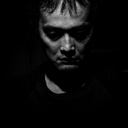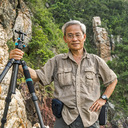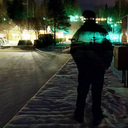0 Likes
The grave of Hazel Ying Lee is located in River View Cemetery in Portland, Oregon. From a website:
Hazel Ying Lee, born and educated in Oregon, became the first Chinese American woman to earn a pilot’s license and fly for the U.S. military, as one of two Chinese Americans in the Women Airforce Service Pilots (WASPs) - the other was Margaret “Maggie” Gee from California. Known for her good nature, piloting skill, and courage, her peers considered her to be an excellent colleague and pilot. At an early age, Lee knew she wanted to fly. After graduating from high school she took a job as an elevator operator at a department store to earn money for flight lessons. At the age of 19, she joined the Chinese Flying Club of Portland and took lessons from aviator Al Greenwood. She earned her pilot's license in October 1932. In 1933, like many Chinese American pilots, she went to China, hoping to become a military pilot. The Chinese Air Force turned her down because they did not allow women pilots. Despite her disappointment, she remained in China. For a while, Lee had a military desk job, and flew, on occasion, for a commercial airline. She again tried to join the Chinese Air Force in July 1937, when the Second Sino-Japanese War officially began. The military again rejected her because of her gender. Returning to the United States in 1938, she worked for the Chinese government as a buyer of war materials in New York. In the fall of 1942, Lee applied for the Women’s Flying Training Detachment, which later merged with the Women Airforce Ferrying Squadron to become the Women’s Airforce Service Pilots (WASP). She began her training in February 1943 at Avenger Field in Sweetwater, Texas. During the six-month training program, she learned to fly a variety of military planes. Lee relished her role and her ethnicity, teaching her fellow WASPs about her culture, Chinese food, and even inscribing classmates’ nicknames in Chinese characters with lipstick on their airplanes. After training in Texas, Lee was stationed at the Air Transport Command’s Romulus Army Air Base in Michigan. There she flew ferrying and administrative flights in the Boeing-Stearman PT17s, North American T-6 Texans, and the Boeing C-47, which could transport up to 6,000 pounds of cargo. In 1944, Lee attended Pursuit School in Brownsville, Texas, becoming one of approximately 30 women qualified to fly high-powered, single-engine fighter aircraft, such as the Republic P-47 Thunderbolt, North American P-51 Mustang, and the Bell P-63 Kingcobra. Known for her humor and fearlessness, Lee had only two forced landings in her career. The first was in a Kansas farmer’s field. The farmer mistook her for Japanese and chased her around her plane with a pitchfork until she was able to convince him otherwise.
On November 10, 1944, Lee received orders to go to the Bell Aircraft factory at Niagara Falls, New York, and pick up a P-63 and deliver the plane to Great Falls, Montana. During the War, Lee and the other Pursuit pilots delivered over 5,000 fighters to Great Falls, an important link in supplying Russian allies with planes. From Montana, male pilots flew the fighters to Alaska, where Russian pilots waited to fly the planes home. After a weather delay in Fargo, North Dakota, Lee took off for Montana. She was cleared to land in Great Falls at the same time a large number of P-63's approached the airport, creating confusion on the part of the control tower. Upon landing, Lee's plane and another P-63 collided and burst into flames. Lee pulled from her burning plane, died two days later, on November 25, 1944, as a result of her injuries. Three days after hearing of her death, her family received a telegram informing them that her brother Victor had been killed in combat in France. The two are buried alongside each other at Riverview Cemetery in Portland. Of the 1,102 women who in the WASP program, 38 died in service. Lee was the last. Although they flew under military command, the WASPS were classified as civilians and received no military benefits. On average, they were paid less than their male counterparts, had to pay for their own room and board, and had to buy their own uniforms. The Air Force would not pay for their funeral expenses even if they died in service. In 1977, President Jimmy Carter gave WASPs veteran status. President Barack Obama awarded the WASPs the Congressional Gold Medal in 2010.
From: https://www.faa.gov/sites/faa.gov/files/about/history/pioneers/Hazel_Ying_Lee.pdf
...




